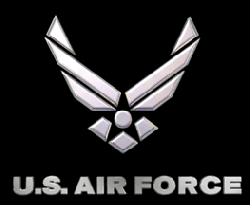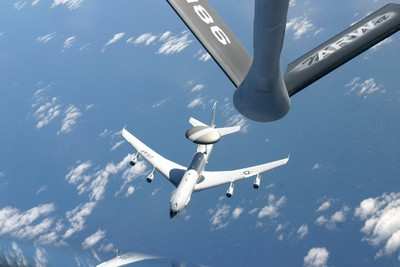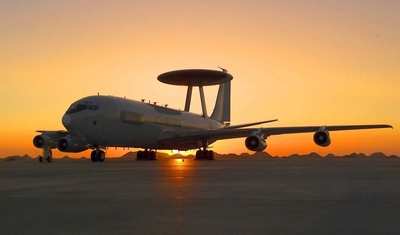 Members of the 552nd Air Control
Wing were in Argentina through Nov. 7th to provide airborne
surveillance for the Summit of the Americas attended by President
George W. Bush. Thirty-three North and South American leaders
convened at the summit to discuss solutions to common political,
economic and social problems.
Members of the 552nd Air Control
Wing were in Argentina through Nov. 7th to provide airborne
surveillance for the Summit of the Americas attended by President
George W. Bush. Thirty-three North and South American leaders
convened at the summit to discuss solutions to common political,
economic and social problems.
For one week the wing from Tinker Air Force Base, Okla.,
assisted in command, control and communication operations from
here, flying sorties in the E-3 Sentry airborne warning and control
system to ensure the safety of the president and other senior
leaders.
“Protection of the president is the most important mission
entrusted to our wing,” said Lt. Col. Gregory D. Roberts,
960th Airborne Air Control Squadron commander. He was also the
960th Expeditionary Squadron commander. “This was the largest
E-3 deployment since Operation Iraqi Freedom.”
The colonel said, “This deployment has proven the
expeditionary force concept using reach-back through Langley AFB
(Va.) for (secure communications), and 12th Air Force and local
Argentinean support for aviation weather. We even worked one
medevac, not to mention the great support from the tanker airlift
control center at Scott AFB (Ill.) for deployment and
redeployment.”
The wing flew nine AWACS sorties and 11 refueling missions, but
the hours spent flying only scratched the surface of the hard work
put forth to accomplish the mission.
A vital part of the mission was when host nation military
personnel flew onboard the AWACS as liaisons between the AWACS crew
and Argentinean ground control. Master Sgt. A.J. Coneti was the
liaison between the host nation riders and the AWACS crews.
“It was the Argentinean fighters protecting the air space
while AWACS provided the communication,” Sergeant Coneti
said.

“The host nation riders would radio down and say
‘these guys feel uncomfortable about this, can we check it
out?’”
He said having the host nation riders onboard cut back on delays
that would have set the mission back an hour or more, by clarifying
different radio and aviation terminology.
“They got on the radio and coordinated with their agencies
to get the flight plans we requested issued,” he said.
Ground troops were also working side-by-side with the
Argentinean troops. Staff Sgt. Jesus Osuna, a maintainer, spent
much of his time building relationships with the Argentinean
military members. He translated conversations between Argentinean
security forces troops and U.S. Airman and ended up playing two
vital roles on the flightline.
“I’m excited that something I just happen to know
helps the mission and my country,” he said.
Sergeant Osuna said the translating came in handy many times,
but the E-3 arrivals stuck out in his mind. He said shortly after
the third one landed, two Argentinean fighters landed and parked on
the ramp. Space on the flightline and ramp was extremely limited
and the E-3 could not taxi in without disturbing the fighters.
Communication needed to happen fast and Sergeant Osuna was their
guy.

“We are all learning from each other. Practicing languages
and learning each other’s cultures,” he said.
“The people are so nice. They’ll do anything for you,
whatever they can to help.”
When all was said and done, President Bush’s arrival into
and departure out of Argentina was safe as the AWACS crew members
tracked the process from 30,000 feet in the air, while ground crews
made and kept the communication possible. [ANN Salutes 1st Lt.
Corinna M. Jones, 552nd Air Control Wing Public Affairs]
 ANN's Daily Aero-Linx (05.06.25)
ANN's Daily Aero-Linx (05.06.25) ANN's Daily Aero-Term (05.06.25): Ultrahigh Frequency (UHF)
ANN's Daily Aero-Term (05.06.25): Ultrahigh Frequency (UHF) ANN FAQ: Q&A 101
ANN FAQ: Q&A 101 Classic Aero-TV: Virtual Reality Painting--PPG Leverages Technology for Training
Classic Aero-TV: Virtual Reality Painting--PPG Leverages Technology for Training Airborne 05.02.25: Joby Crewed Milestone, Diamond Club, Canadian Pilot Insurance
Airborne 05.02.25: Joby Crewed Milestone, Diamond Club, Canadian Pilot Insurance





